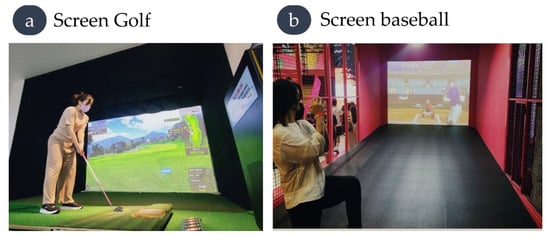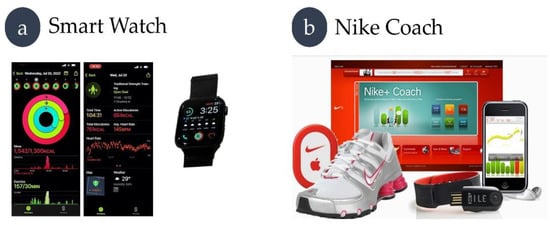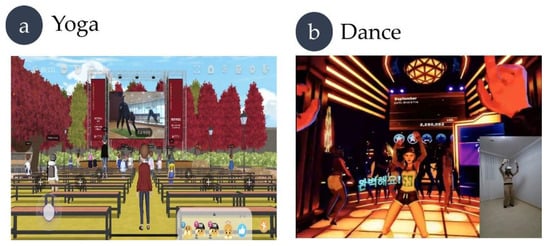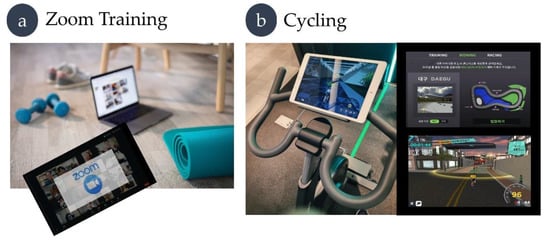You're using an outdated browser. Please upgrade to a modern browser for the best experience.
Please note this is a comparison between Version 1 by Ji-Eun Yu and Version 3 by Yongseok Jee.
The metaverse has been evolving the internet-based education represented by e-learning. Metaverse technology is currently being developed as a platform centered on content-based information industries. The potential of the metaverse is not small in the education world, and metaverse technology is already being used in the sports world. Through this manuscript, we can examine the utilization of metaverse in the sports world, and also examine the pros and cons.
- physical education
- metaverse technology
- platform
1. Augmented Reality and Physical Education Practice
1. Augumented Reality and Physical Education Practice
Augmented reality is a technology that enhances work efficiency by augmenting virtual information in real- time and space [1][2][10,22]. It allows learners to interact with the augmented virtual information, as shown in Figure 13.

Figure 13.
Practical physical education in augmented reality.
Screen golf (Figure 13a) is a game in which a ball that remains on the 18th hole is hit with a golf club into each hole, just like in real golf. In a real golf game, the ball is hit with the golf club from the 1st to the 18th hole. The person who hits the ball the lowest number of times is the winner. A normal golf course is about 6–7 km long and takes 3–4 h to walk, but screen golf takes about 1–2 h per person, because there is no walking distance. Like in a real golf course, screen golf, with a total of 18 holes, consists of 9 out-course holes and 9 in-course holes. There are two par 3 holes (short holes), five par 4 holes (middle holes), and two par 5 holes (long holes) for every nine holes in the first half and second half. The standard number of strokes is 72 strokes when 18 holes are used. If a learner scores three less than the number of holes, this is called an “Albatross”; two less than the number of holes is an “Eagle”; one less than the number of holes is a “Birdie”; and if their score is equal to the standard number of holes, it is a “par”. On the other hand, a score of one over the number of holes is called a “Bogey”, two over is called a “Double bogey”, three over is a “Triple bogey”, and four over is called a “Quadruple bogey”. In Korea, due to the availability of screen golf, golf is becoming very popular, and its use is expected to be very high in physical education.
2. Lifelogging and Physical Education
A typical example of lifelogging is a smart watch. The smart watches released to date usually function independently or as a peripheral devices linked to a smartphone. Since this device is in the shape of a wristwatch, the screen size is limited, so the input/output environment is limited. However, as it is wearable and carried in close contact with the wrist, the physiological information of the human body (heart rate, blood pressure, metabolic consumption, body temperature, electrocardiogram and so on) is always acceptable [3][11]. It is also possible to send a signal to the user as a haptic output through tactile senses such as vibration. In addition, since it is fixed on the wrist, the smart watch’s information can be read without using any hands, compared to smartphones that require at least one hand to use. However, since humans are highly dependent on visual information, it is a general assessment that the weaknesses outweigh the strengths, and that it will be widely usedable as a fully- fledged smart device only if there is a breakthrough in user-interface development, or a change in the idea. Lifelogging is a method of augmenting the inner world [4][23]. In the world of lifelogging, many learners use smart devices to record their daily lives on the internet or on smartphones, as shown in Figure 24.

Figure 24.
Practical physical education in lifelogging.
A culture of analyzing, recording, organizing, storing, and sharing information on lifestyles through various forms of data generated from daily activities is currently spreading. This daily digitization has the advantages of productivity, flexibility, relationship orientation, and customization [5][24]. As shown in Figure 24b, Nike+ is a representative example of a lifelogging technology applied to enable daily exercise. Nike+ is used to motivate running and achieve goals by measuring and recording the distance, time, and calories burned through the Nike+ sensor attached to the sneaker. In addition, the Nike+ running technology allows users to share their routes and records with other users [6][14]. In addition, Nike+ has developed a run club, providing running courses and customized running programs.
Introducing augmented reality technology, the wearing of goggle-like glasses offers a virtual partner, such as a “Ghostpacer” that runs with the learner [7][25]. This can be used as a very effective exercise tool to continuously practice exercise, or control exercise intensity. It can be used to introduce a virtual partner to suit the learner’s condition and adjust their records, increasing motivation with the same effect as running with another person.
3. Virtual Reality and Physical Education
The virtual world is a type of simulation of the internal world. It uses virtual reality technology, which includes sophisticated 3-dimensional (3D) graphics, avatars, and instant communication tools, so that learners feel that they are completely immersed in a virtual world. In the post-coronavirus crisis period, Korea is trying to cope with continuing outdoor sports activities using virtual reality technology to avoid the effects of fine dust and bad weather. VThe virtual reality technology is a virtual reality system that allows sports activities to be performed while watching a screen, such as awith screen golf in the classroom. In a situation where sports activities cannot be performed due to restrictions on outdoor activities, most learners can still enjoy sports activities within virtual reality just as they would actually play soccer or baseball. Virtual reality sports are sports that allow users to experience the effects of real exercise within an augmented reality system in a virtual world. As described above, screen golf, baseball, tennis, badminton, table tennis, horseback riding, and yoga (shown in Figure 35) may be taught in the same way as in actual physical education practice.

Figure 35.
Practical physical education in virtual reality.
4. Mirror Reality and Physical Education
The mirror world is a type of simulation of the external world, and refers to informationally enhanced virtual models or reflections of the real world [8][9][15,16]. The mirror world is a metaverse that transfers the appearance, information, and structure of the real world to a virtual world, as shown in Figure 46.

Figure 46.
Practical physical education in the mirror world.
Rather than being the same as reality, it is as an efficient expansion of reality [10][20]. The mirror world is made possible by lifelogging technologies such as mapping, modeling and geospatial tools and sensors, and location recognition technology that connects real and virtual spaces. Map information based on GPS, various data extracted from the real world, and mapping technologies that connect them make the mirror world possible. Most of the technologies corresponding to the mirror world are linked with maps such as Google Maps and Naver Maps [6][14]. A learner can also search for the nearest exercise facility, check its location, and make a reservation. In addition, they can prepare in advance as if they had already visited the desired place.
The mirror world, which is being used in various fields in society and industry as a result of recently developed technology, serves as a medium that makes it easy for humans to accept their avatar in the metaverse as a familiar and comfortable personality, without any sense of alienation. Therefore, it can be easily used in a singular curriculum in the field of physical education.
